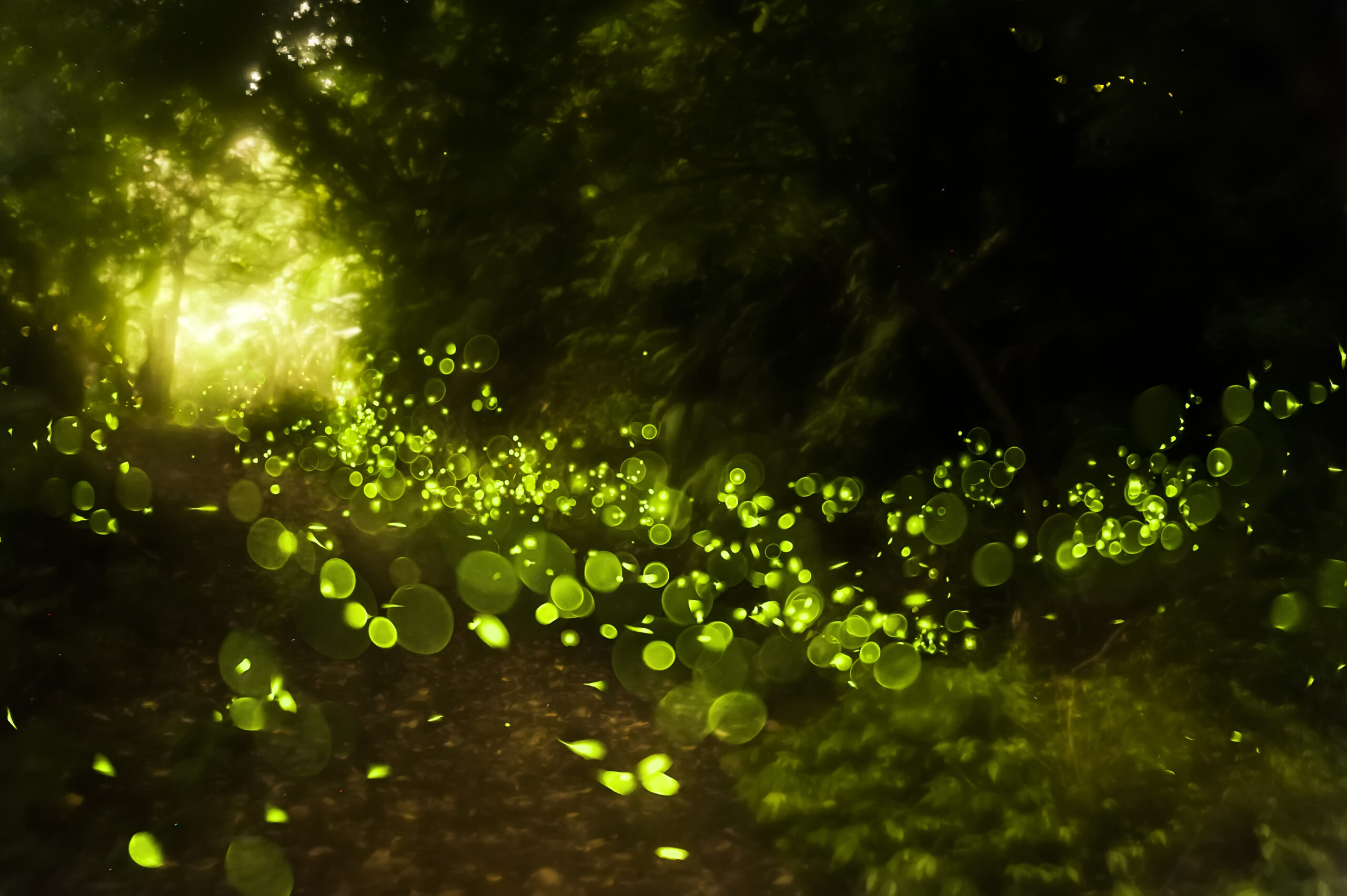In Conversation with Artist Jackie Philip
By Jackie Philip
/ 21 December, 2025
As the cycles of the year turn toward the winter solstice, the earth enters her darkest night, that ancient still...
Read More
 by Dea Isidora
In every culture still in reverence of its indigenous spirituality, faith in the good folk is alive. Whether it is in the lore of the land or much like an experiential form of connection to nature, devas, tree dryads, sea nymphs and little people living entwined with the greening known to many as the good folk, or fairies. A vast supernatural, land-based healing knowledge is enlaced in every indigenous culture from Central Europe, through Britain to Iceland.
Fairy traditions from the British Isles are making a swift return in our lives today. Ireland’s fairy faith is unique and likely as old as the Emerald Isle itself, potentially predating the arrival of the Celts. It is in the memory of the land, deeply vowed into the undulating countryside landscape.
by Dea Isidora
In every culture still in reverence of its indigenous spirituality, faith in the good folk is alive. Whether it is in the lore of the land or much like an experiential form of connection to nature, devas, tree dryads, sea nymphs and little people living entwined with the greening known to many as the good folk, or fairies. A vast supernatural, land-based healing knowledge is enlaced in every indigenous culture from Central Europe, through Britain to Iceland.
Fairy traditions from the British Isles are making a swift return in our lives today. Ireland’s fairy faith is unique and likely as old as the Emerald Isle itself, potentially predating the arrival of the Celts. It is in the memory of the land, deeply vowed into the undulating countryside landscape.
 Secondly, the Tuath Dé’s lore alludes to a unique place of origin where the arts of healing, magic and sacred combat can be studied and mastered. Here, great spiritual wisdom and enlightenment were bestowed upon them as masters of the elements. This place is given a perfect Fairy World-like description as an ‘Island beyond the Sea’, a metaphor for the land of the fey in lore. It is also best known as simply the otherworld, Undying Lands, or in Gaelic, Tir Na Nog – the Isle of Youth.
Although later records from Victorian Ireland recognise other creatures and supernatural beings, many have faded into legend and are mistaken for the sídhe. So it is helpful to distinguish the good folk as descendants of the Tuath Dé – the sídhe of the fairy mounds – from other creatures like leprechauns, brownies and nixies.
Ireland’s recorded myth is filled with second-hand accounts of early Catholic influence, and much of the lore passed down in oral tradition warns against any interaction with the otherworld. In fact, the sídhe became associated at one time with death and suffering, as reverends and priests recounted folk stories with added religious interpretations. This was possibly motivated by fear and the intention to divorce the population from indigenous spiritual beliefs – not by denying its existence altogether, but by mortifying the population into distancing themselves from the otherworldly.
Nevertheless, it is safe to say that faith in the fairy folk stayed very much alive in Irish, Scottish and Welsh cultures, even if it has changed its ways a few times over. First-hand accounts of fairy sightings are still documented by those living close to the natural world.
Secondly, the Tuath Dé’s lore alludes to a unique place of origin where the arts of healing, magic and sacred combat can be studied and mastered. Here, great spiritual wisdom and enlightenment were bestowed upon them as masters of the elements. This place is given a perfect Fairy World-like description as an ‘Island beyond the Sea’, a metaphor for the land of the fey in lore. It is also best known as simply the otherworld, Undying Lands, or in Gaelic, Tir Na Nog – the Isle of Youth.
Although later records from Victorian Ireland recognise other creatures and supernatural beings, many have faded into legend and are mistaken for the sídhe. So it is helpful to distinguish the good folk as descendants of the Tuath Dé – the sídhe of the fairy mounds – from other creatures like leprechauns, brownies and nixies.
Ireland’s recorded myth is filled with second-hand accounts of early Catholic influence, and much of the lore passed down in oral tradition warns against any interaction with the otherworld. In fact, the sídhe became associated at one time with death and suffering, as reverends and priests recounted folk stories with added religious interpretations. This was possibly motivated by fear and the intention to divorce the population from indigenous spiritual beliefs – not by denying its existence altogether, but by mortifying the population into distancing themselves from the otherworldly.
Nevertheless, it is safe to say that faith in the fairy folk stayed very much alive in Irish, Scottish and Welsh cultures, even if it has changed its ways a few times over. First-hand accounts of fairy sightings are still documented by those living close to the natural world.
 Dea Isidora, Ph.D is an international mystic, author, and the founder of Avalon Academy.
avalonmysteryschool.co.uk
Dea Isidora, Ph.D is an international mystic, author, and the founder of Avalon Academy.
avalonmysteryschool.co.uk

Join the Academy and learn from some of the best spiritual
and wellbeing teachers in the world
Join the Academy and learn from some of the best spiritual
and wellbeing teachers in the world
Join the Academy and learn from some of the best spiritual
and wellbeing teachers in the world
